The Yamaha YZF-R1 turns 25 – Part 2
Up and away
The new chassis – labelled the Deltabox II – was 1.3 kg lighter than the ThunderAce’s, and with a 582 mm swingarm gave a final wheelbase of 1395 mm, a massive 69 mm shorter than the ThunderAce.
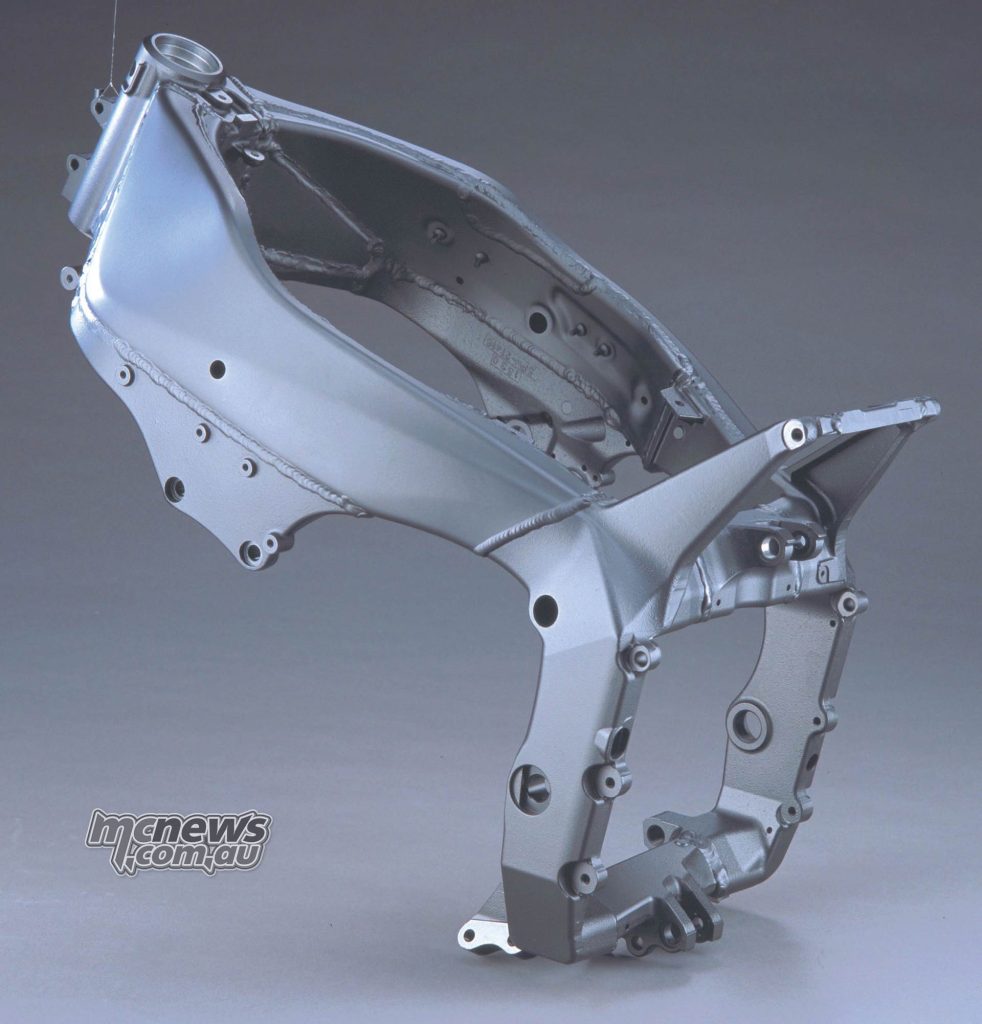
The Deltabox II chassis was comprised of cast aluminium in a twin-spar layout. Miwa-san got as close to the ideal 50/50 weight distribution mark, and even went to the trouble of saving about 47 percent off the overall weight of the handlebars.
The tank incorporated lap welding to allow it to sit further into the top of the chassis, and the fairing was fitted with race-style quick-release fasteners to enable the rider to whip it off quickly if needed.
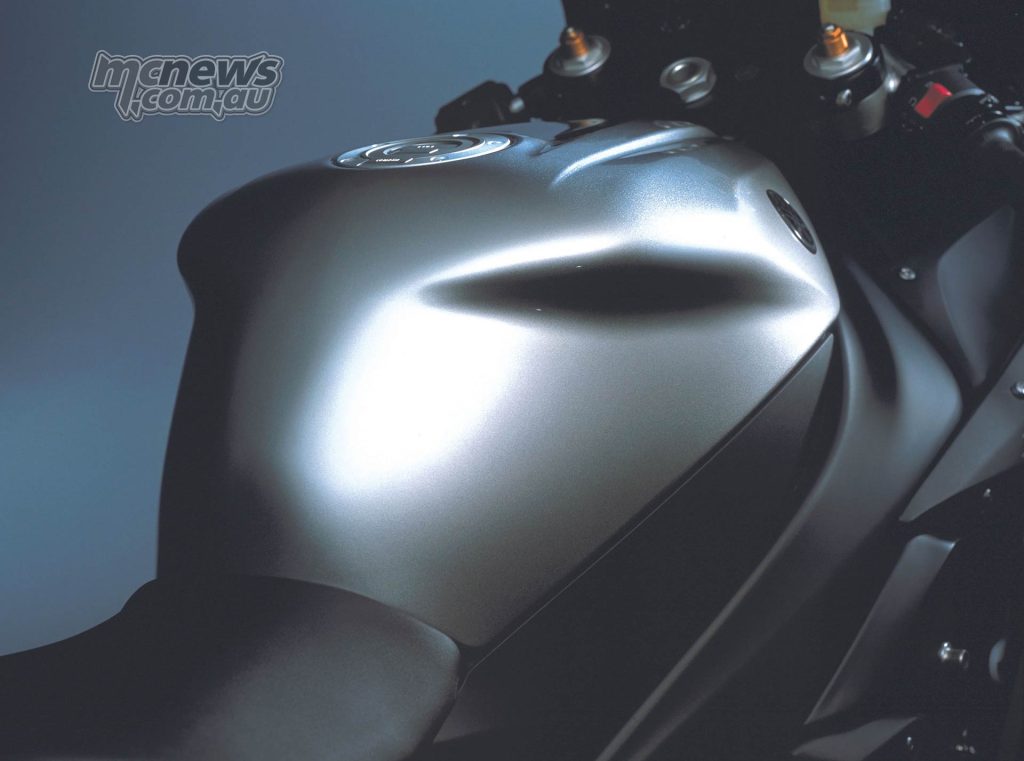
When it came to the suspension, Miwa-san opted for 41mm upside-down, fully-adjustable forks, offering 135mm of travel.
This was around 15mm up on the rest of the competition, with Miwa-san noting the extra travel reduced the fork’s tendency to top-out under hard acceleration.
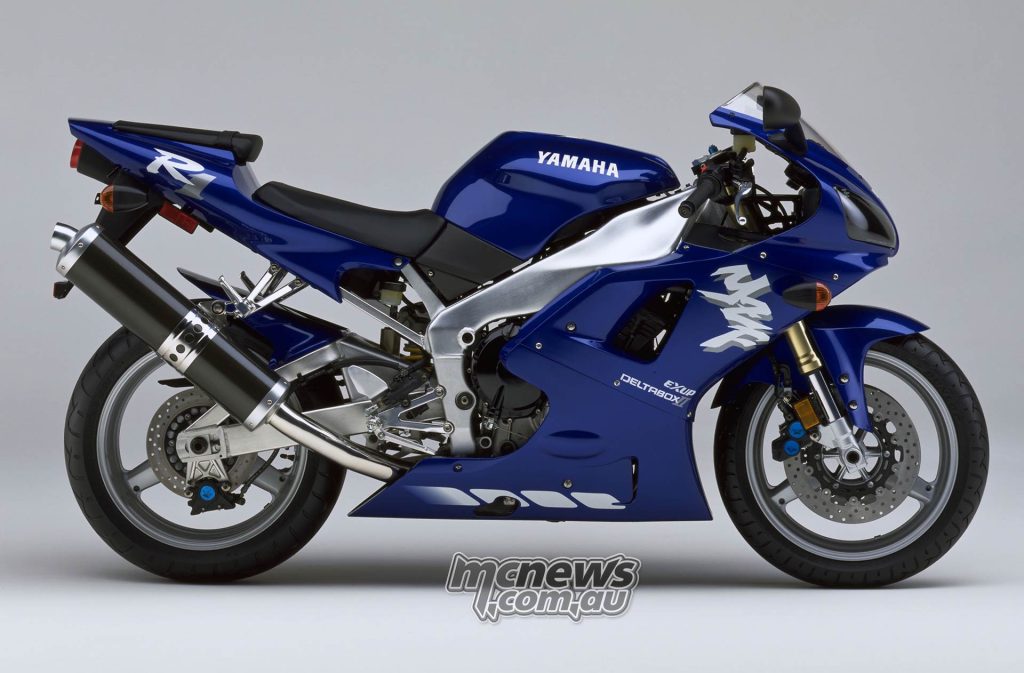
The rear suspension duties were taken care off by a fully-adjustable Bilstein monoshock using Yamaha’s Monocross linkage system.
Significantly for future collectors, the suspension is completely rebuildable — good news especially when you consider how hard some 1998 R1’s have been hammered over the years.

Braking duties were by four-piston Sumitomo calipers, not the six-piston calipers found on later models. These weren’t exactly new, but a revised version of what was found on the ThunderAce.
A twin-piston Monobloc caliper was used at the back and mounted directly to the swingarm.
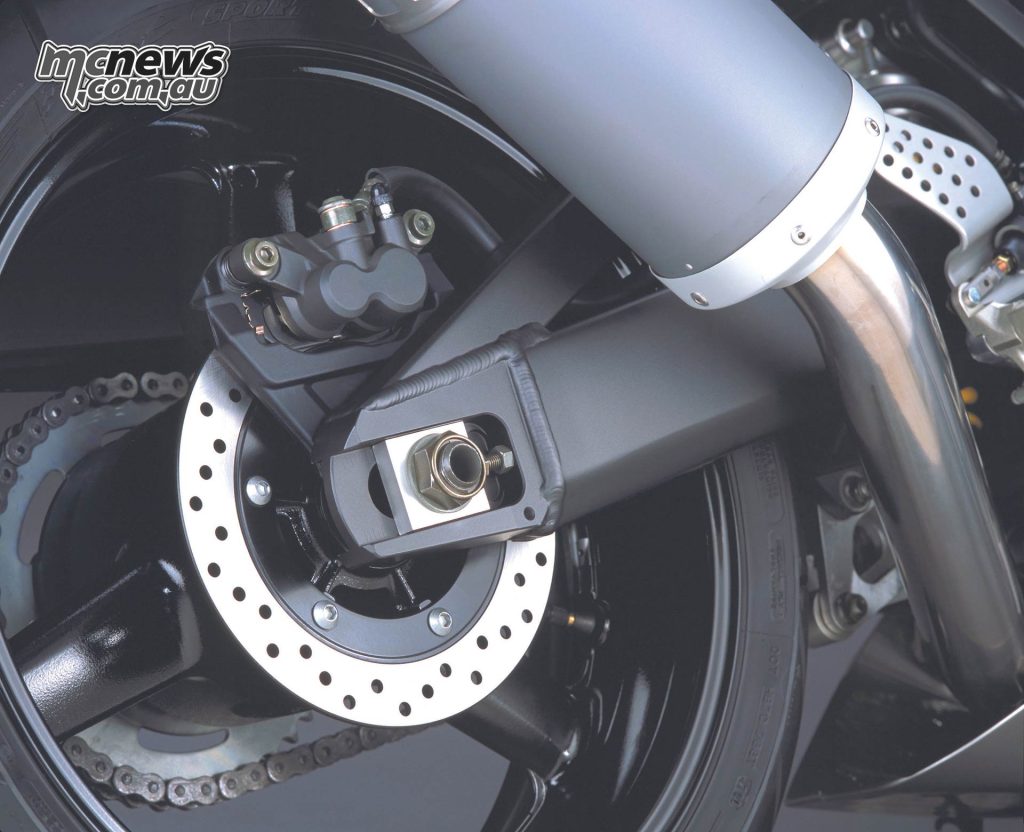
Getting the show rolling were new, lightweight three-spoke cast aluminium wheels, with the rear growing by 0.5in to 6.0 x 17in over the ThunderAce’s 5.50. The front stayed the same at 3.5 x 17in.
Even though the R1 was a technically superior machine to anything on the market at the time, it also changed the way people styled sportsbikes.
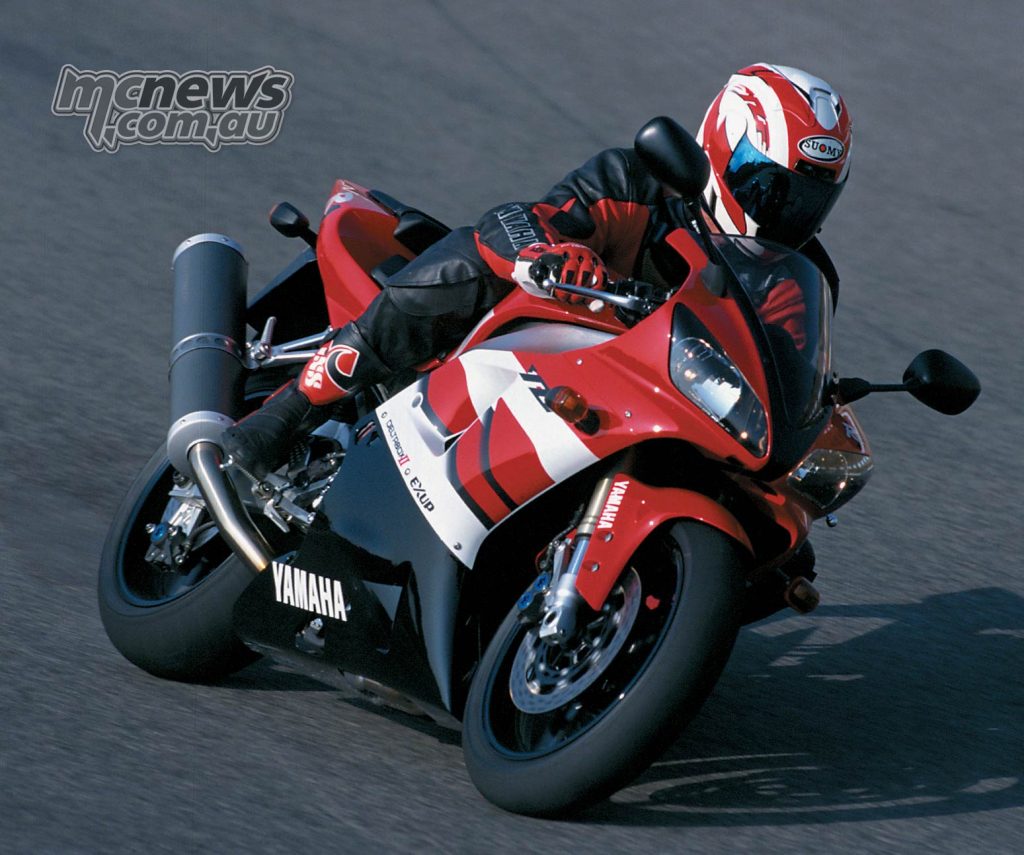
Just as the Honda CBR900RR had in 1992, and the Ducati 916 did likewise in 1994, the R1 made people stop and ask, “What the heck is that?”
Design in the ’90s, particularly after the 916 appeared, changed little until after the R1 came to dealer floors.
Indeed, Honda went right back to the drawing board and released the aggressively-restyled Fireblade 929 of the year 2000, and Suzuki immediately began drawing up the bike that would ultimately displace the R1 at the top of the sportsbike tree, the Suzuki GSX-R1000 of 2001.
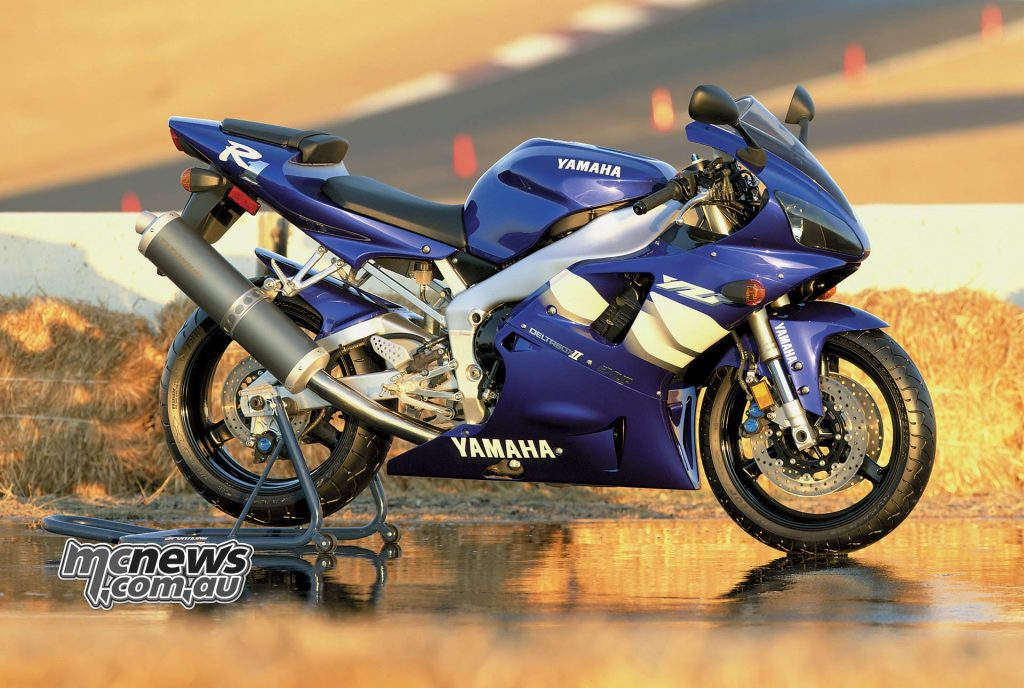
It took Kawasaki until 2004, with the first edition of the ZX-10R, before they even began to get a look in.
Such was the impact of the first R1 it is still revered as one of the most important sports motorcycles ever released.
Ask many non-motorcycling people and they may not know what a ZX-10R, or a CBR1000RR is, but you can almost bet they have heard of an R1.
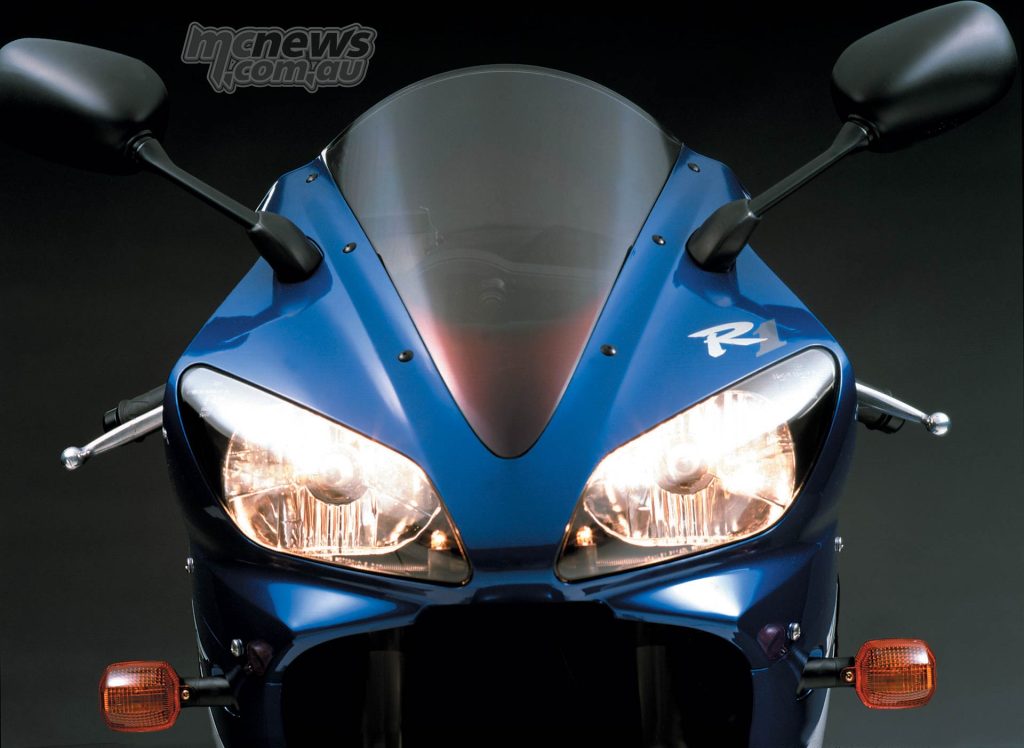
That’s because the R1 blasted the competition to bits in 1998 to 2001. It rightfully earned a reputation as a fearsome machine, designed for experts and it no doubt caused its fair share of broken bones and bodies as lesser mortals tried to take the R1 to its limits and got bitten.
The 1998 Yamaha YZF-R1 is truly a machine that has earned its place in motorcycling history.
Use the navigation below to continue to the next page























